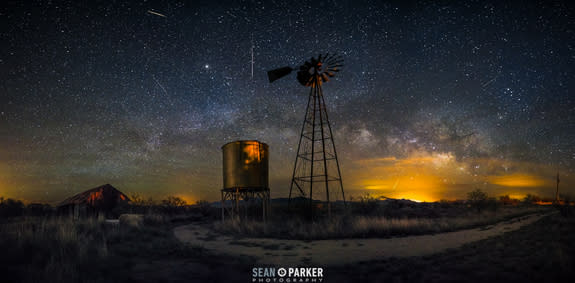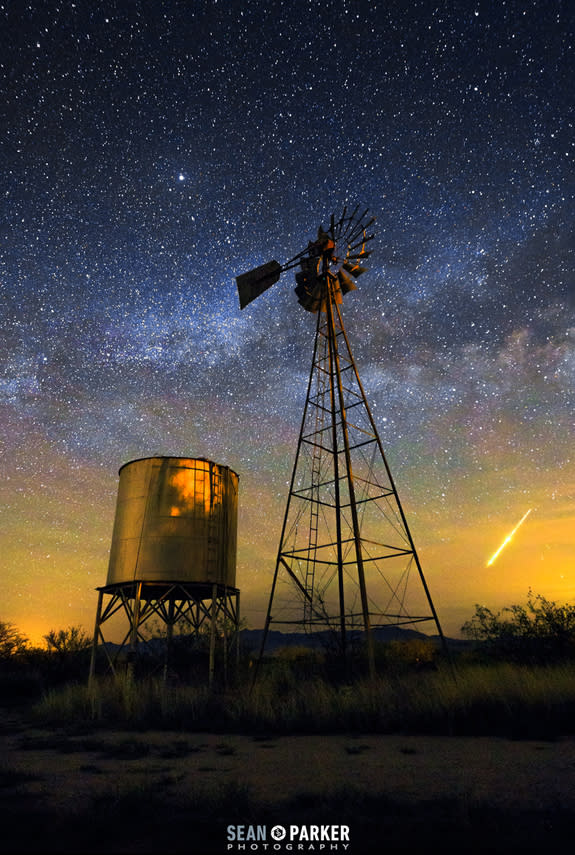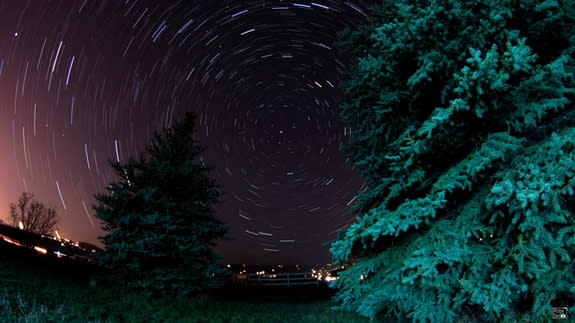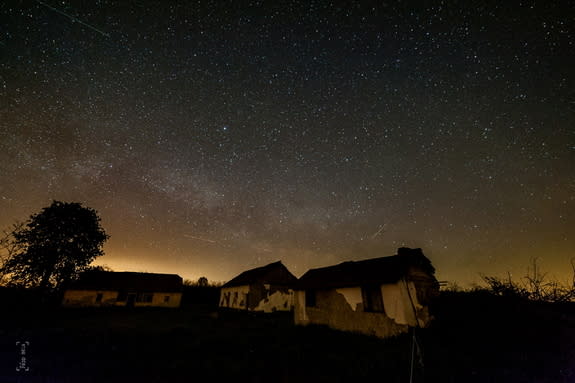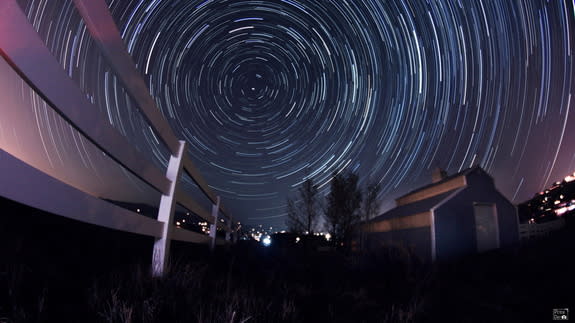Lyrid Meteor Shower's Peak Captured in Stunning Photos
Photographers in the western United States captured gorgeous shots of this year's Lyrid meteor shower, which peaked Wednesday night and early Thursday morning (April 22 and April 23).
The above image by astrophotographer Sean Parker features multiple Lyrid meteors burning up as they streak through the atmosphere. Parker took the photos at Empire Ranch in Sonoita, just outside Tucson, Arizona.
While the peak of the yearly Lyrid shower has now passed, some falling space some should still be visible Thursday night, experts say. [Photos of the 2013 Lyrid meteor shower]
Another photo by Parker features a particularly vibrant-looking meteor burning up in the lower right portion of the image.
Sky photographer Peter Day was also on the hunt for Lyrid meteors on Tuesday night (April 21). Day captured a single meteor streaking through the night sky over Park City, Utah, at 1:34 a.m. EDT (1534 GMT). The meteor can be seen near the middle of the image below.
Day's image compiles 60 photographs with 30-second-long exposures, creating a view of the sky that spans 30 minutes. This long-duration view captures the apparent motion of the stars across the sky, a phenomenon that is actually caused by the rotation of the Earth.
Photographer Béla Papp sat outside in Kocsér, Hungary, for four hours just after midnight on April 23, to capture the fantastic image above. One Lyrid meteor can be seen just above the nearest building, while the other streaks were created by airplanes. Papp said in an email to Space.com that about 12 meteors could be seen each hour, but that almost all of them were small and disappeared quickly.
The Lyrid meteor shower is so named because the meteors appear to come from a spot in the sky southwest of the star Vega in the constellation Lyra. According to Space.com contributor Joe Rao, about 10 to 20 meteors can be seen per hour during the shower's peak, and about five to 10 per hour the night before and the night after. So skywatchers should still be able to see some Lyrid meteors Thursday night.
The bits of rock that sprinkle the Earth during the Lyrid meteor shower are left over from Comet Thatcher, which was last visible on Earth in 1861. Each year in April, Earth's orbit passes through the spray of debris left behind by the comet, which circles the sun once every 400 years.
Day finished out his night with one more long-exposure photograph, this one from a beautiful vantage point behind a barn, with the lights of nearby houses visible near the bottom of the image. The photo was compiled over 90 minutes, and the streaks of the stars are long, creating a very different view of the night sky than what can be seen with the human eye.
Follow Calla Cofield @callacofield. Follow us @Spacedotcom, Facebook and Google+. Original article on Space.com.
Copyright 2015 SPACE.com, a Purch company. All rights reserved. This material may not be published, broadcast, rewritten or redistributed.

